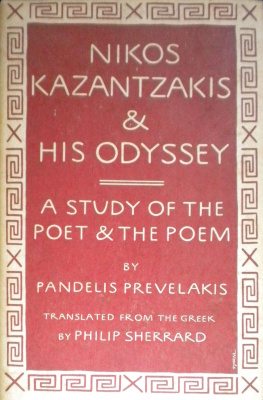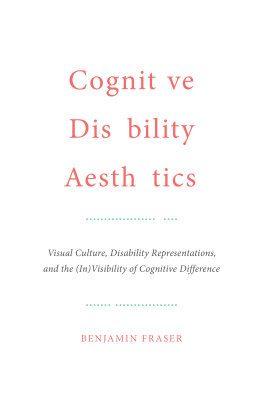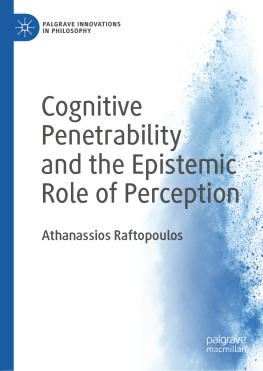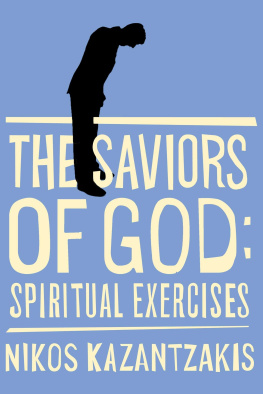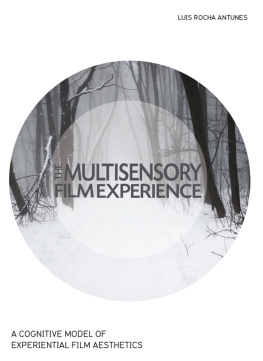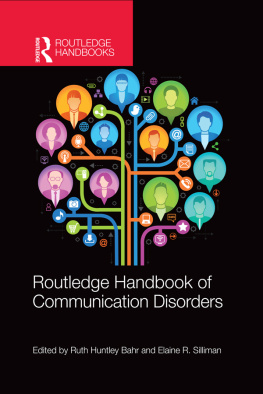First Published by
Lawrence Erlbaum Associates, Inc., Publishers
10 Industrial Avenue
Mahwah, New Jersey 07430
Transferred to Digital Printing 2009 by Routledge
270 Madison Avenue New York, NY 10016
2 Park Square Milton Park, Abingdon Oxon OX14 4RN
Copyright by Lawrence Erlbaum Associates, Inc.
All rights reserved. No part of this book may be reproduced in any form, by photostat, microfilm, retrieval system, or any other means, without the prior written permission of the publisher.
Library of Congress Cataloging-in-Publication Data
Metallinos, Nikos
Television aesthetics : perceptual, cognitive, and compostional bases / Nikos Metallinos.
p. cm.
Includes bibliographical references and index.
ISBN 0-8058-1221-0 (cloth : alk. paper). ISBN 0-8058-2218-6 (pbk. : alk. paper)
ISBN 978-1-1366-8614-6 (ePub)
1. TelevisionAesthetics. 2. Visual perception. 3. Auditory perception. 4. Television and the arts. 5. TelevisionProduction and direction. I. Title.
PN1992.55.M46 1996
791.4501dc20
95-42621
CIP
Publishers Note
The publisher has gone to great lengths to ensure the quality of this reprint but points out that some imperfections in the original may be apparent.
Rapid developments, wide application, and peoples total dependence on visual communication media define the need for the development of the field of visual literacy. Film, photography, television, and computerized images shape peoples images of the world and themselves with astonishing speed, intimacy, and persuasion. The dominance of the 500-channel universe offered by direct satellite television and the global, instant, and direct communication offered by the Internet computer network justify the urgency for the establishment of the principles governing the perception, the comprehension, and the synthesis of visual messages. Furthermore, the availabilityand easy accessof the visual communication media technologies, along with the power of the visual image and peoples fascination with the novelty these technologies provide, dictate the need for teaching visual literacy to both those who create visual images and those who consume them.
This volume offers a response to three ongoing needs: (a) the need to develop the main compositional principles pertinent to the visual communication medium of television, (b) the need to establish the field of television aesthetics as an extension of the broader field of visual literacy, and (c) the need to promote television aesthetics to both students and consumers of television.
The aesthetic principles of television images that I develop are based on effective empirical research on all three axesperception, cognition, and composition; they are drawn from converging research in academic disciplines such as psychology (perceptual, cognitive, and experimental), neurophysiology, and the fine arts (including painting, photography, film, theater, and music). Although the aesthetics of the fine arts were traditionally built on contextual theories that relied heavily on subjective evaluations, critical analyses, and descriptive research methods, the aesthetics of todays visual communication media consider equally valuable empirical methodologies found in all sciences. In fact, investigations in these different academic disciplines have provided the constructs and have strengthened the foundations of the theory of television aesthetics offered in this book.
In every stage of the production, transmission, and reception of televised images there are hidden agendas, persuasive agents, interferences, deceptions, and noises that often hinder the real purpose of communication, deliberately disturbing the meaning. Visual literacy in general, and television aesthetics in particular, provides knowledge of these dangers by acknowledging the theories pertaining to perception (visual, auditory, and motion), cognition, and composition. The production, transmission, and reception of television pictures are interrelated with these three axes and are interdependent with perception, cognition, and composition, each of which raises these three questions:
- What is the message?
- What does it mean?
- How was it constructed?
Part I of the book deals with the perception of television images and examines the basic theories of perception in the three areas of vision, hearing, and movement in corresponding chapters on visual perception, auditory perception, and vision in motion. Part II is devoted to the review of the main theories of cognition as they relate to television picture comprehension. It also examines the neurophysiologies of the eye, the ear, and the brain, and discusses the process of decodification of visual and auditory messages in respective chapters on the human information systems, the brain and the mind, and the standards for recognizing pictures and sounds. Part III refers to the compositional principles of television pictures with chapters that review and examine the arts, criticism, and applied rules of composition of television pictures, respectively.
The review of the existing theories, the examination of the empirical findings in conventional fields, and the discussions of the principles stemming from research in perception, cognition, and composition constitute the integrated theme and underline the approach of this book. Efforts to develop television aesthetics should increase and the approaches to the study of television aesthetics should be broadened, as the need to enter the information highway is now more demanding than ever.
There are many people who assisted me, directly or indirectly, in writing this bookcolleagues, students, and friends. I would like to extend my sincere thanks to all and especially to my three teachers, mentors, colleagues, and now, friends. Dr. Herbert Zettl, from San Francisco State University, inspired me as a teacher and has provided the basic theories of television aesthetics. Dr. Robert K. Tiemens, from the University of Utah, taught me the research methodologies related to visual images and provided valuable guidance in my academic career. Dr. James E. Fletcher provided new, advanced, and accurate research measuring devices for the scientific study of visual images. Dr. Fletcher inspired my research involvement and encouraged and assisted me with this book. Finally, a warm thank you to my wife, Daisy, for her valuable assistance and patience.
Nikos Metallinos







